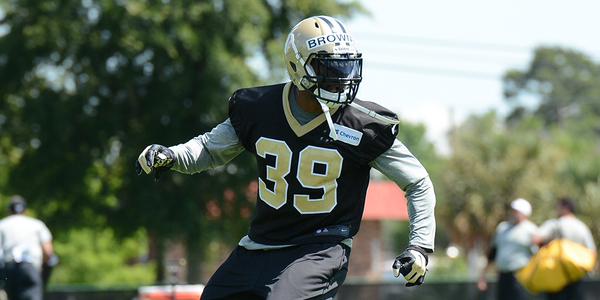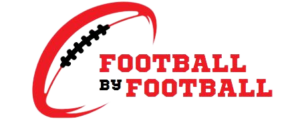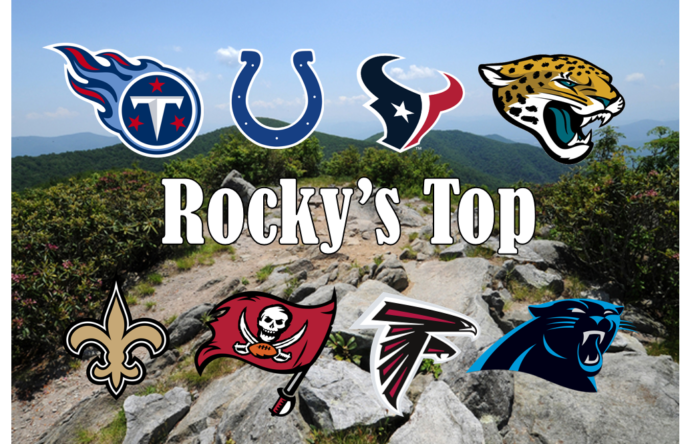AFC South
The most intriguing narrative in the past NFL season revolved around whether Marcus Mariota would develop into a great professional quarterback.
On one hand, it was evident that he had little-to-no experience throwing from a pocket, a crucial skill for success in the NFL.
On the other hand, his college program, which demanded speed and quick decisions, was believed to aid in processing information rapidly—an essential quality for a successful quarterback.
Regardless, his lack of experience behind a rather average offensive line and an unreliable defense didn’t permit the Tennessee Titans to contend in the AFC South that year.
In the past, the sentiment towards the Jacksonville Jaguars mirrored an appreciation for what head coach Gus Bradley was constructing.
The prospect of quarterback Blake Bortles making a pivotal leap in productivity in his second year sparked enthusiasm.
The presence of promising young talent at wide receiver, including Marquise Lee, Allen Robinson, and rookie running back T.J. Yeldon, suggested the potential for the offense to become a formidable force.
However, defensively, the Jaguars were noted to lack star power, particularly after the unfortunate loss of No. 1 pick Dante Fowler Jr. for the year due to a torn ACL sustained in the first OTA.
The overall outlook for Jacksonville pointed to challenging times—a period conducive to growth and agitation but lacking sufficient wins to contend.
The biggest addition to the Colts is former 49er Frank Gore. Indy’s OC Pep Hamilton is a guy who wants to lean heavily on the ground game.
The Houston Texans achieved a 9-7 record in the preceding season but narrowly fell short of making the playoffs despite starting four different quarterbacks.
The quarterback position remained uncertain, with Ryan Mallet, former Cleveland Brown Brian Hoyer, and second-year player Tom Savage competing for the role.
Complicating matters, the departure of franchise standout Andre Johnson to the Colts after 12 illustrious seasons in Houston was noted.
Adding to the challenges, the prominent running back Arian Foster was slated to miss up to three months with a groin injury sustained early in camp.
While the early schedule was not overly daunting, featuring games against Kansas City and Indianapolis before November, the combination of quarterback instability and limited offensive explosiveness was seen as a harbinger of a setback for Houston in that season.
Conversely, the standout team in the division was the Indianapolis Colts. Despite their close call in the previous season, their defense and restricted offensive weaponry were exposed in the playoffs against New England.
The acquisition of former Texan Andre Johnson, still displaying prowess, provided quarterback Andrew Luck with the long, vertical threat he had been lacking.
Additionally, the draft saw the addition of former Miami Hurricane Phillip Dorsett.
Reports from Indianapolis’ camp indicated that the offense adopted an aggressive and explosive approach not witnessed since the days of Peyton Manning, Marvin Harrison, and Reggie Wayne.

In hindsight, the most notable addition to the team in the past season was former 49er Frank Gore. The offensive coordinator, Pep Hamilton, strongly opposed relying heavily on the ground game.
Despite previous challenges in establishing a robust running game in Indianapolis, particularly evident in the unsuccessful Trent Richardson experiment, Gore’s powerful, north-south running style was anticipated to bring balance and enhance quarterback Andrew Luck’s performance.
The expectation was that opposing defenses would no longer have the luxury of thinning the box to overload the secondary against Luck and the passing game.
A legitimate running threat, combined with an array of dynamic pass-catching talent, was deemed a potential game-changer, compelling opposing defenses to reassess their strategies against the Colts.
However, the primary concern for the team was a defense that struggled to stop the run or apply pressure on opposing quarterbacks consistently.
Despite consistently winning 11 games in each of the past three seasons, the Colts faced significant setbacks in blowout losses to New England, with an average margin of 29 points in four encounters.
The envisioned future for Indianapolis resembled the early- and mid-2000s Colts teams, featuring an explosively quick-scoring offense capable of putting 14 points on the board before fans could settle into their seats.
The defensive strategy was expected to be characterized by a bend-but-don’t-break approach, heavily relying on turnovers. With Luck in his prime, this formula was seen as having the potential to propel the Colts to the Super Bowl.
NFC South
In the past, the newly appointed head coach of the Atlanta Falcons, Dan Quinn, faced a formidable challenge: attempting to secure victories with a team that boasted the league’s worst defense the previous year.
The roster lacked difference-making talent overall, and the offensive line had allowed quarterback Matt Ryan to face considerable challenges in the prior season. Coach Quinn’s arrival in Atlanta marked a significant transition.
The positive aspect was Quinn’s expertise in cultivating pass-rushers and instilling disciplined, technique-based approaches—qualities prominently displayed during his tenure as the defensive coordinator in Seattle.
His task involved nothing short of a coaching miracle to elevate the defense to the level of the few playmakers present on the offensive side.
Despite the challenges, hope emerged because the NFC South was considered the weakest division in professional football. If Atlanta could make modest improvements on defense, there was a distant chance of contention in the division.
Reflecting on the previous season, the Carolina Panthers, who secured the division title with seven victories, faced similar prospects.
The team boasted cornerstones on both sides of the ball, with standout linebacker Luke Kuechly and dynamic quarterback Cam Newton.
Despite their divisional success, the Panthers finished with a sub-.500 record, indicating limited improvement in addressing two critical weaknesses: a porous offensive line and a shortage of explosive weapons in the passing game, aside from wide receiver Kelvin Benjamin.
Efforts to fortify the offensive line included the addition of former Raven and Titan offensive tackle Michael Oher, and the team drafted Devin Funchess, a raw converted tight end from Michigan.
However, the perceived inadequacies in addressing these issues led to the belief that the Panthers were poised to take a step back in the upcoming season.
Conversely, the Tampa Bay Buccaneers endured a disastrous season the previous year, finishing with a 2-14 record despite high-dollar free-agent signings such as quarterback Josh McCown, offensive lineman Anthony Collins, and defensive end Michael Johnson.
The arrival of No. 1 overall pick quarterback Jameis Winston injected new life into the franchise.
The storyline for the Buccaneers hinged on Winston’s maturation and development into a great quarterback or the potential for him to go off the rails—a narrative anticipated to be one of the most significant in the NFL that year.
However, despite Winston’s performance, doubts persisted about the team’s overall talent, casting a shadow on their ability to contend.

Looking back at the past, despite being acknowledged as the poorest division in professional football, the New Orleans Saints, led by a trusted quarterback, were poised to claim the NFC South that year.
Even with the departures of tight end Jimmy Graham and wide receiver Kenny Stills, the confidence in quarterback Drew Brees remained high. Brees was considered an “elevator,” capable of elevating the performance of everyone around him, including marginal talents on offense.
In the prior season, the Saints, under the guidance of defensive coordinator Rob Ryan, had a defense that finished 31st in the league.
Expectations were for a shift in performance, with a return to the hallmark of Ryan’s defenses—creating turnovers.
The addition of former Seahawks and Patriots cornerback Brandon Browner, coupled with the return of safety Jarius Byrd to total health, was anticipated to provide substantial assistance.
The Saints’ favorable schedule and the resolve to not repeat the previous season’s five home game losses contributed to the optimistic outlook.
In the unique landscape of the NFC South, where any team could conceivably contend, the Saints were deemed the best-positioned to capitalize on a division undergoing repairs and return to their competitive norm.

